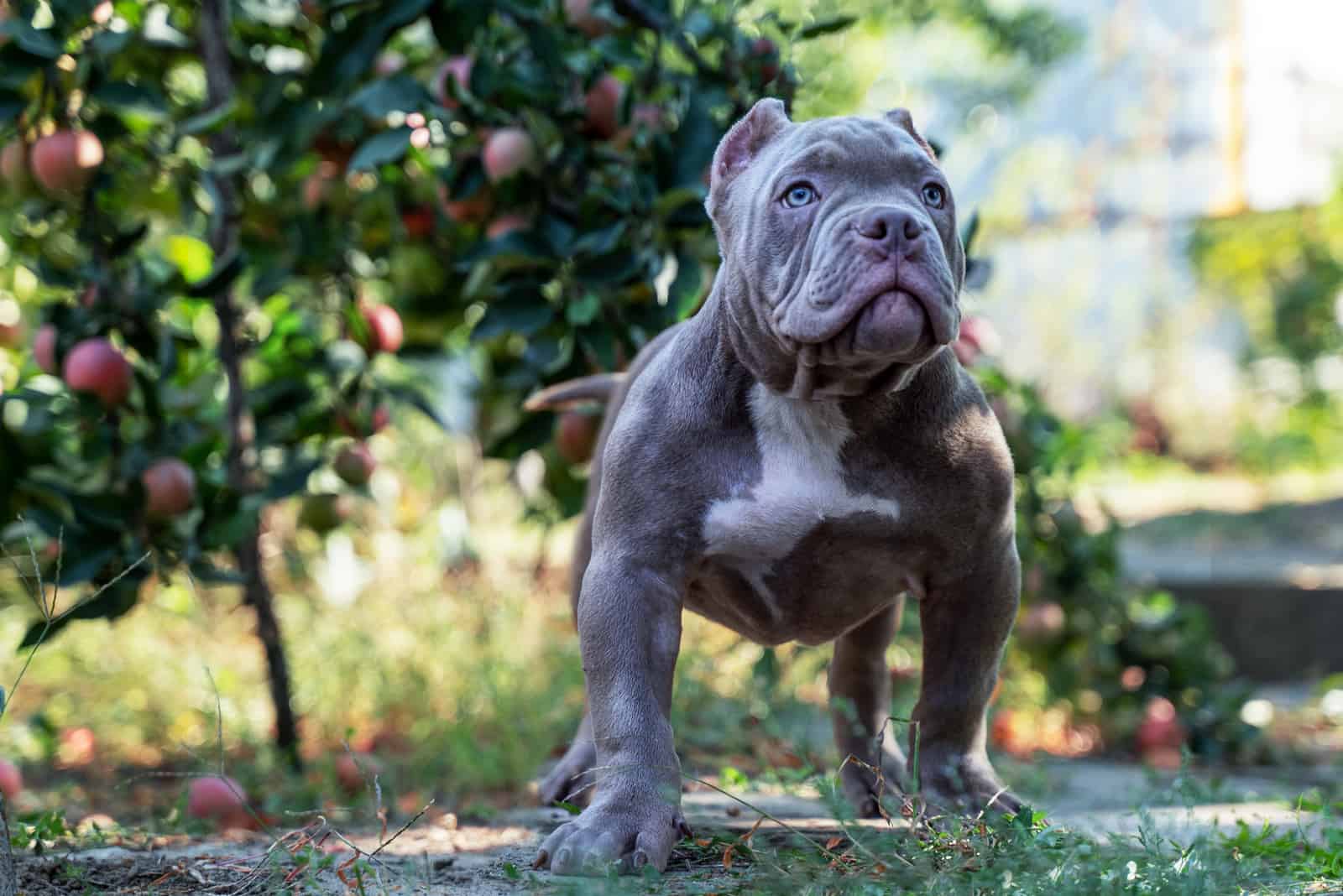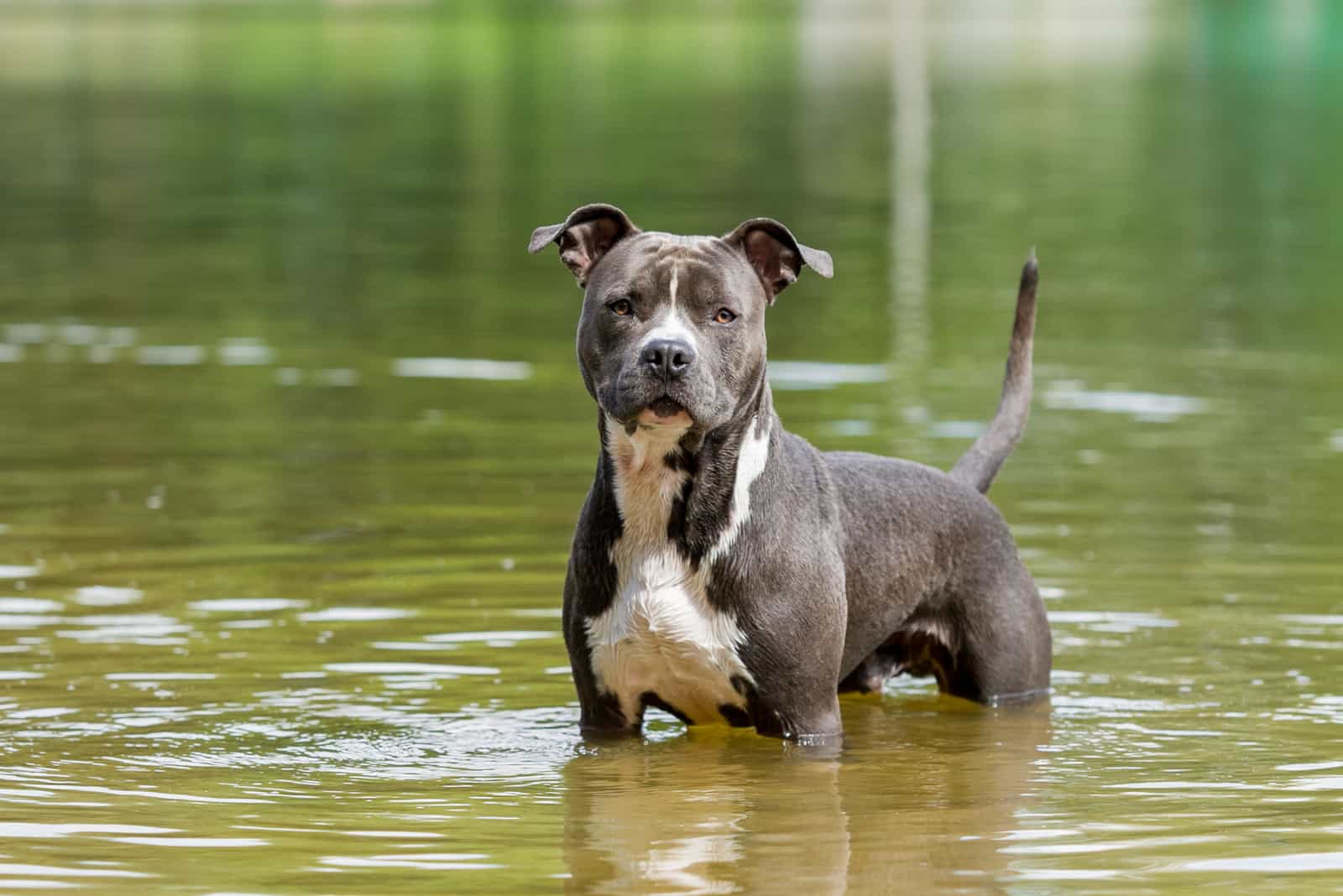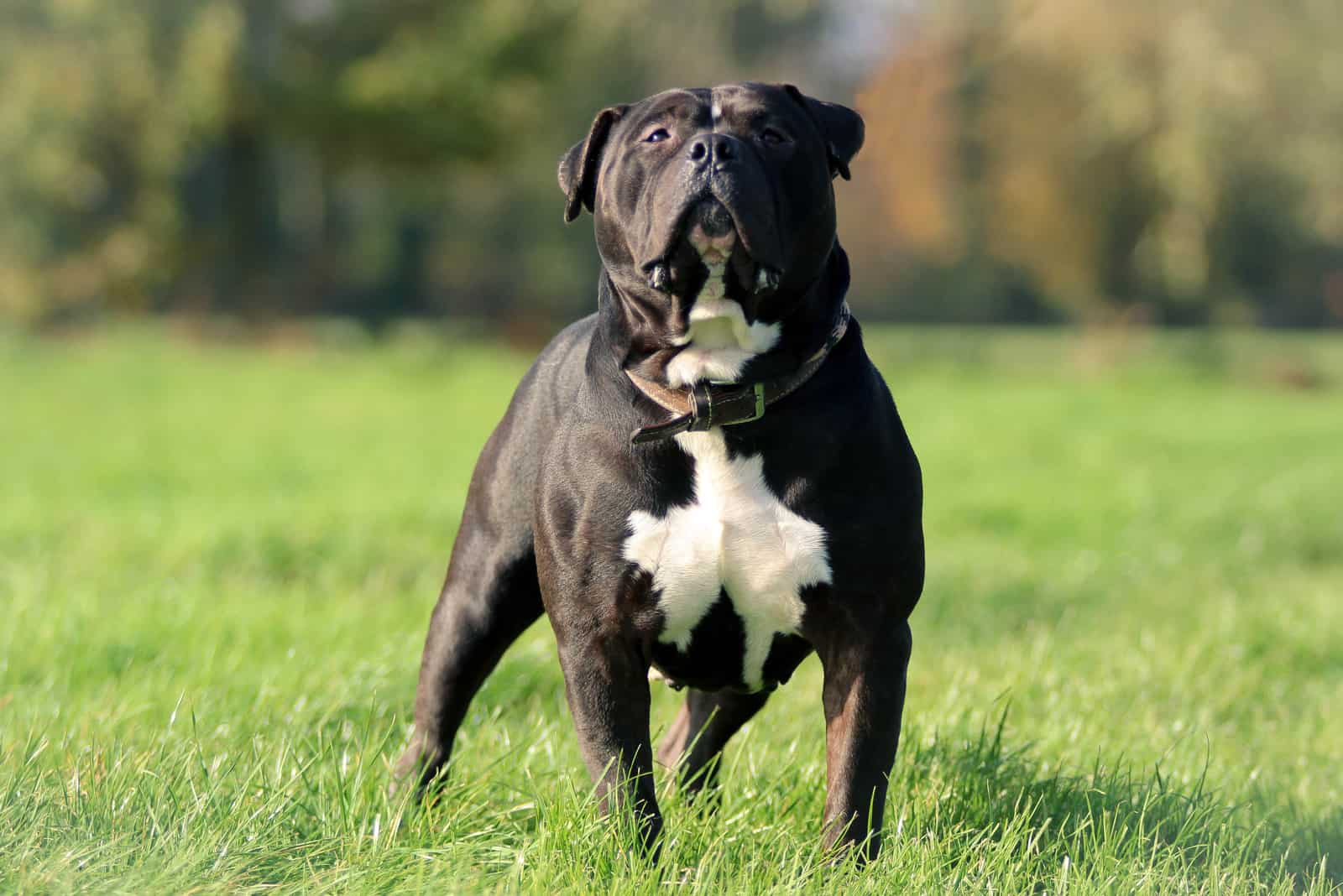Did you know that the term ‘Pitbull’ does not refer to just one dog, but it is an umbrella term that refers to several different dogs? These dogs have some similarities, but at the same time, different, although most people have viewed them as one type of dog for years.
Also, there are a large number of Pitbull mixes that some people also call Pit Bulls, even though the mixed puppy has inherited characteristics from both of his parents.
The two dog breeds from which the Pitties originated are Bulldogs and Terriers. In the past, these dogs were known as fighting dogs , which caused them to get a bad reputation . So, it is a common belief today that Pitbulls are aggressive, impossible to train, and prone to biting.
Recently, opponents of this opinion have appeared, and they are trying to prove that these types of dogs are very loyal and attached to their owner, and that they can be great family dogs if they are trained and socialized from an early age.
Unfortunately, Pitbull fights are still held in some places today in America , although they are illegal.
In the following text, we will learn which types of Pitbull dogs there are, and how they differ.
How Many Types Of Pitbulls Are There?
Due to the existence of evidence of a large number of Pitbull attacks on people, there has been breed-specific legislation of Pitbull dogs in certain places. This legislation means banning the possession of this type of dog.
This kind of law is ineffective , and can in no way apply to all types of Pitbulls . Also, the act of one dog should not signify the character of an entire dog breed . Any type of dog can sometimes show a form of aggression throughout its life, so it is important to socialize every dog on time.
But, let’s get back to our Pitbulls. Such a ban is especially unrealistic since most people don’t know Pitbulls and their types. Thus, for example, cities such as Denver and Miami apply this ban to Pitbull types and all other dogs that resemble Pitbulls in their appearance and characteristics.
In some other places, like Singapore, the American Bulldog is considered the only Pitbull dog, and it is banned there.
So, it’s time to find out what Pit Bull dog breeds there are if we are to consider ourselves serious dog lovers, am I right?
There are a lot of different breeds of Pitbulls, and today, we will describe the four types of Pitbull dogs that are the most widespread, and with which the Pit Bull is most often equated as a single dog breed.
Read Also: 16 Dogs That Look Like Pitbulls – Similarities And Differences
1. American Pitbull Terrier

The American Pitbull Terrier ( APBT ) is a purebred Pitbull dog that, according to certain traditional opinions, is the only real Pitbull. This type of Pitbull is recognized by the United Kennel Club ( UKC ), but not by the American Kennel Club ( AKC ).
This dog originated in the British Isles, where it was often used in blood sports . It arrived in America in the second half of the 19th century , where people used it to aid in hunting and as working dogs on farms.
Also, here, the American Pitbull Terrier has found its place as a family dog and as a faithful companion for many dog lovers .
The APBT is widely recognized for its muscular and stocky body build, its flat head, and its huge jaw.
The American Pitbull Terrier is a friendly dog that shows special love to children, but you still need to be careful, especially at the beginning. These dogs are full of energy and require daily stimulation, both physical and mental.
They also need to undergo intensive training and learn obedience early. If you succeed in these things, you will have the best possible friend in your Pitbull! However, if this dog does not get enough exercise, and he becomes bored, he can very easily show aggressive behavior and the urge to destroy.
Also, be careful if you own other pets, especially cats, as they are particularly delicious prey for the American Pitbull Terrier .
What Is The Difference Between A Red Nose And A Blue Nose APBT?
A special treat for any American Pitbull Terrier lover is two rare and lovely subspecies of this dog:
• Red-nose Pitbull: this dog is the same as the American Pitbull Terrier , but it has a red nose, red lips, and red toenails.
• Blue-nose Pitbull: just like the red-nose Pitbull , the blue-nose Pitbull has a blue nose, blue toenails, and blue lips. Some of these Pit Bulls might have blue eyes like Husky dogs when they are first born, but they will get darker with time.
Because of the rare recessive gene that causes this interesting detail in these dogs, red-nose and blue-nose Pitbulls cost more money than the standard APBT .
| Breed Highlights | |
|---|---|
| Height: | 18-21 inches (males), 17-20 inches (females) |
| Weight: | 35-60 pounds (males), 30-50 pounds (females) |
| Lifespan: | 8-15 years (males) |
| Lifespan: | 8-15 years (females) |
| Temperament : | eager to please, enthusiastic, good with children, intelligent, tenacious |
| Appearance: | muscular build , powerful jaw |
| Coat colors: | gray, black and white, brown, red, blue, brindle |
| Health problems: | allergies, hip dysplasia, heart disease |
2. American Staffordshire Terrier

Popularly called the Amstaff, the American Staffordshire Terrier originated from the former Mastiffs and English Bulldogs in 19th century England .
These dogs were used for many years for blood sports and bull-baiting . This fact and this dog’s size and muscular appearance are the main reasons why people see all types of Pitbull dogs as aggressive animals. You can look at the Pitbull growth chart to see just how big these dogs can get!
In case you didn’t know, you can train your American Staffordshire Terrier to be your best watchdog, and at the same time, a dog that is extremely attached to you and who adores being petted!
We can’t say that this is an easy task: this dog has a lot of energy and instincts to chase prey, so you will need a lot of time and patience to socialize and train your American Staffordshire Terrier.
So, if you are a good dog trainer, and if you love challenges, your life with an Amstaff will be one big adventure! Even if other people are a little scared of your pet, look at it from the positive side – you have a terrifying guard dog with whom your property is one-hundred percent safe, and potential intruders have no idea how gentle and sociable your Amstaff really is!
One thing to keep in mind is that the American Staffordshire Terrier loves to bite and chew all kinds of things. If you buy a small puppy, be prepared for the fact that it will most likely destroy some of your shoes or furniture.
With this dog breed, it is very important to start training and obedience exercises as early as possible so that the dog learns from an early age to distinguish what is allowed and what is not.
| Breed Highglihts | |
|---|---|
| Height : | 18-19 inches (males), 17-18 inches (females) |
| Weight : | 50 to 70 pounds (males), 45-60 pounds (females) |
| Lifespan: | 12-14 years |
| Temperament: | energetic, friendly, trainable |
| Appearance: | athletic, muscular, broad head, round eyes |
| Coat colors : | black, blue, brindle , fawn, red |
| Health problems : | allergies, hip dysplasia |
3. American Bully

The American Bully is a relatively young dog that emerged during the 80s and 90s in the United States. This mixed breed was created by merging the American Pit Bull Terrier, the Staffordshire Terrier, and some other Pit Bull breeds and Bulldog-type breeds.
This mixing created a wicked-looking muscular dog, which many breeders use to raise the price of this specific type of Pitbull . Always research the breeder from whom you intend to buy a dog well, especially a “designer” dog like the American Bully .
Related: The Best American Bully Breeder In The United States
This breed of dog is not recognized by the American Kennel Club as a purebred dog .
The American Bully breed can be found in several different sizes:
• Pocket American Bully: up to 17 inches tall
• Standard American Bully: up to 20 inches tall
• Classic American Bully: up to 20 inches tall
• XL American Bully : up to 23 inches tall
The American Bully is considered a great family pet , but given his genes, he needs early socialization and setting boundaries. This dog is energetic and active, but not too demanding for dog owners .
Compared to some other types of Pitbulls, the American Bully needs less exercise, and he will be satisfied with regular walks or occasional running.
| Breed Highlights | |
|---|---|
| Height: | 17-20 inches (males), 16-19 inches (females) |
| Weight : | 44-132 pounds |
| Lifespan : | 8-13 years |
| Temperament: | confident, intelligent, loving, loyal |
| Appearance : | large muscles, short legs, ears high set |
| Coat colors: | black, blue, brown, fawn, gray, red, white |
| Health problems: | cherry eye, ectropion, entropion |
4. Staffordshire Bull Terrier
Widely called Staffies, Staffordshire Bull Terrier dogs were known for dogfighting in 19th century Britain, while they are nowadays familiar as great and loyal companions of many families.
While many proud owners of this dog will be happy to explain to people that there is no good reason for a Staffie to be known to be aggressive, its long-standing bad reputation may unfortunately never completely disappear.
Simply put, most people judge a dog by its appearance and its muscular build , and the firm stance of this Pit Bull automatically associates them with biting, aggression, and attacks.
This cannot be further from the truth! Today’s Staffies are in every sense completely different from their ancestors. Imagine why a dog like the Staffordshire Bull Terrier would get the nickname, the nanny dog, if it wasn’t great with kids?
But, we will not deceive you and say that everything is easy with this dog. He knows how to be willful, and requires an experienced and confident coach who will approach his character and his needs the right way.
| Breed Highlights | |
|---|---|
| Height: | 16 inches (males), 14 inches (females) |
| Weight: | 28 to 38 pounds (males), 24 to 34 pounds (females) |
| Lifespan: | 12-14 years |
| Temperament: | fearless, gentle, protective, curious, stubborn, sensitive |
| Appearance: | muscled, flat, and a short head |
| Coat colors: | black, blue, fawn, red, white |
| Health problems : | hip dysplasia, elbow dysplasia, Patellar Luxation |
How Can I Tell What Kind Of Pitbull I Have?
A responsible dog breeder should inform you about the type of dog you are buying, his bloodline , his parents, his health condition, and all other important information. If you have not received information about the exact type of Pitbull you purchased, you can try to check this information with your veterinarian.
Also, by using our short guide on types of Pitbull dogs, I believe you can get information on which Pitbull is yours! As you can see, they differ in height, weight, appearance, and character. What they might cite as similarities in all Pitbulls is their firm posture, muscular body, and specific head shape.
The expected lifespan for all Pitbull dogs is usually between 12 and 14 years. There are, of course, many exceptions – some of them live less than 10 years, while some will live up to 17 years.
Related: How Long Do Pitbulls Live? Is There A Way To Extend Their Lifespan?
One more common thing for all Pitbull dogs is their somewhat frightening look that hides a cuddly and gentle doggo!
Apart from the fact that most people believe that there is only one Pitbull, and that all these dogs are the same breed of dog , some people often mistake Pitbulls for other breeds.
Therefore, don’t be surprised if someone unfamiliar replaces your Pitbull with one of the following types of dog :
• Boxer
• Cane Corso
• Dogo Argentino
• Great Dane
• Rottweiler
Final Thoughts
We hope this text has helped you gain insight into the different types of Pitbull dogs . Despite widespread misunderstanding, the term ‘Pitbull’ does not refer to just one dog, but several different dogs.
Although there are differences between them, our final thought for today is that all Pitbulls are in some way an underestimated breed of dog.
These dogs have been used for illegal fights for years, and they have been taught to be aggressive and to attack their opponents. But, with proper training and teaching them obedience, these dogs can be the most gentle and affectionate pets you can imagine!















